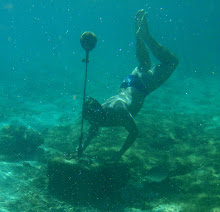
Next and last destination of the day was Wungong Gorge and Bungendore Park just south-east of Armadale. The park supports large areas of Jarrah-Marri woodlands, including some good quality old growth which supply a varied selection of parrots with vital nesting holes.

The Jarrah trees have in an immensely impressive way adapted to the conditions of the southern end of WA. With a root system reaching down as much as 40 meters they are capably of surviving through the toughest of droughts and in the case of a devastating bush fire, the trees will be able to regrow from a underground lignotuber similar to how Mallee and Banksia survive the burning inferno. The quality of the wood has put great pressure on the Jarrah in WA, huge areas of old growth forest have been logged. Its success(?) as a building material being fueled by inbuilt termite- and rot-resistant, but application range from road fill to musical instruments.

The Jarrah and the similar but taller (and rarer) Karri are inhabitants that the tree-knowledgeable people of the region are very proud of and rightly so - get a WA tree-lover (not to be confused with tree-hugger) talking about the quality of these giants and you will be entertained for hours ;-)

Such specific habitat obviously support very specific wildlife, including some sought after Western Australian endemics - actually nearly all of the ones you can hope to find in the south! So no surprise that we found ourselves in the woods a warm warm WA day. We had taken advice from Frank O'Conner's site, it is an excellent resource for those who would like some suggestions on where to go birding in WA. His Wungong Gorge & Bungendore Park section points out that best time for a visit is early morning. Unfortunately that had not been an option for us, which we bird-wise was probably punished for. However, nothing wrong with a walk in some great forest :-)

Well you cannot really complain when you get the chance to stand and observe a group of Red-tailed Black-Cockatoo foraging the trees around you. I manged to get decent pictures of one of the females - the sex can be determined by the presence of yellow barring on the chest, the male is more deep black and has no yellow stripes. The other birds of this blog post are: Australian Ringneck, Western Wattlebird and a rubbish picture of a Varied Sittella.

I had really hoped for a Rufous Treecreaper and a Red-capped Parrot, but the good thing about dipping badly is that you have the best excuse ever for going again :-) Also, when you got the camera along, there is always something exciting around. I managed to do a bit of pseudo-macro shooting with the Bigma. The Wanderer Butterfly below always makes a good picture, by some it is considered the most beautiful insect in the world. It is another immigrant - not native to Australia, it only arrived in 1871, in north America it is called the Monarch. With those bright colorful wings it should not be a surprise that it is poisonous, it can actually be quite bad eating for even large birds. Weirdly enough it seems that a couple of true Aussie tough guys; Pied Currawong and Black-faced Cuckoo-shrike have (developed?) a stomach that can handle the poison - maybe the lesson being that if you survive years of Australian cuisine you can take on most of what mother nature throws at you :-D


No comments:
Post a Comment